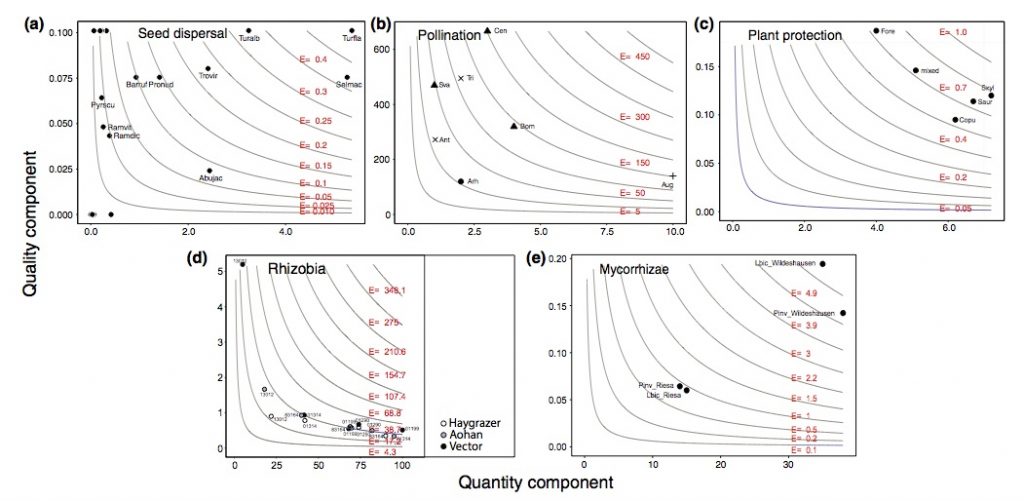A core interest in studies of mutualistic interactions is the ‘effectiveness’ of mutualists in providing benefits to their partners. In plant-animal mutualisms it is widely accepted that the total effect of a mutualist on its partner is estimated as (1) a ‘quantity’ component multiplied by (2) a ‘quality’ component, although the meanings of ‘effectiveness,’ ‘quantity,’ and ‘quality’ and which terms are applied to these metrics vary greatly across studies. In addition, a similar quantity × quality = total effect approach has not been applied to other types of mutualisms, although it could be informative. Lastly, when a total effect approach has been applied, it has invariably been from a phytocentric perspective, focussing on the effects of animal mutualists on their plant partner. This lack of a common framework of ‘effectiveness’ of mutualistic interactions limits generalisation and the development of a broader understanding of the ecology and evolution of mutualisms.
 In a our paper published in Ecology Letters (Schupp, Jordano & Gómez 2017, Ecology Letters 20: 577–590), we propose a general framework to study effectiveness and demonstrate its utility by applying it to both partners in five different types of mutualisms: pollination, seed dispersal, plant protection, rhizobial, and mycorrhizal mutualisms.
In a our paper published in Ecology Letters (Schupp, Jordano & Gómez 2017, Ecology Letters 20: 577–590), we propose a general framework to study effectiveness and demonstrate its utility by applying it to both partners in five different types of mutualisms: pollination, seed dispersal, plant protection, rhizobial, and mycorrhizal mutualisms.
